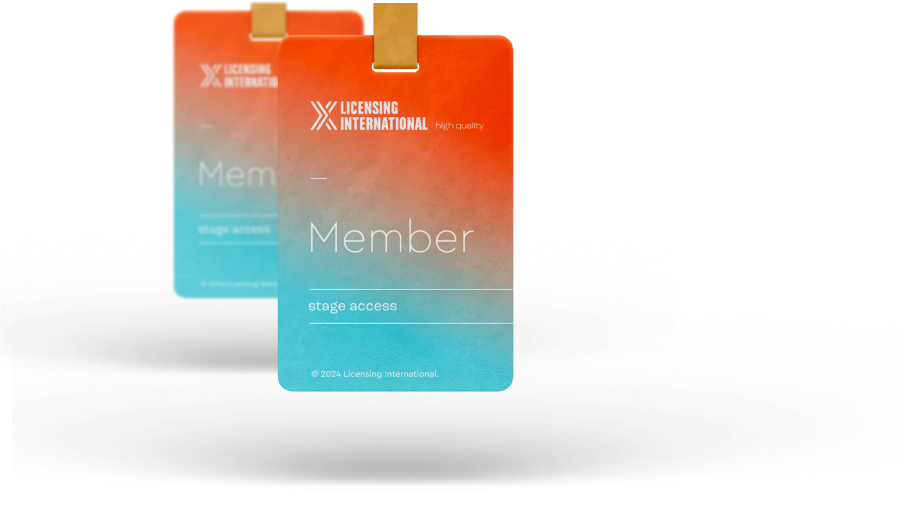Licensing Meets Loyalty: How Italian Retailers Are Redefining Consumer Engagement

Licensing Meets Loyalty: How Italian Retailers Are Redefining Consumer Engagement
By Roberta Nebbia, Italy Managing Director at Licensing International
There is no definitive manual on how to embrace licensing to power promotional and loyalty programs, but Italy has become a remarkable case study. Over the past two decades, the Italian market has seen loyalty programs evolve from traditional point-based systems into sophisticated campaigns that integrate popular brands and global franchises to captivate consumers with entertainment, sports, and houseware at the top of the list.
By leveraging popular brands, companies can foster deeper connections with consumers, driving loyalty and differentiating themselves in a competitive market. These initiatives allow retailers to experience higher foot traffic and sales, as exclusive promotions draw new consumers into stores and strengthen the connection with existing customers.
Grocery chains have been at the forefront of this transformation. Retailers like Esselunga, Coop, and Conad pioneered successful initiatives that allowed shoppers to collect points that could be redeemed for branded rewards, often featuring beloved characters from popular media. While other sectors—such as electronics retailers—attempted to replicate this model, many fell short, revealing that true consumer engagement requires more than replication. It demands creativity, cultural resonance, and strategic use of licensing.
Today, new loyalty and promotional campaigns are embracing licensing with renewed purpose, using storytelling, consumer products, and exclusive content to turn everyday purchases into immersive brand experiences. Initiatives have been so numerous that the promotion and loyalty specialized magazine Promotion, published by Pop Up Media, launched a dedicated initiative—the Promotion Awards, taking place during Milano Home at Milano Expo alongside the loyalty-focused yearly event Brand Power.
Companies like L-Founders, Promotica, and Jakala have served as a reference point for creating campaigns that resonate with costumers throughout the territory. Licensing Italia has partnered with them to foster networking opportunities to support collaborations between the entertainment and loyalty Industries.
Even if best practices are yet to be codified, several recurring elements have emerged as the cornerstones of successful loyalty campaigns involving licensing. Chief among them is the emotional engagement sparked by familiar intellectual properties and characters deeply loved by consumers. Limited-edition merchandise adds a layer of exclusivity and urgency, driving repeat purchases and deeper participation. Moreover, these campaigns often foster fandoms, encouraging consumers to become not just buyers, but brand ambassadors. Particularly successful are experiential rewards, such as themed trips, exclusive visits to theme parks, and behind-the-scenes access, with standout examples coming from live-action television properties. Some campaigns have offered exclusive visits to TV sets, complete with cast meet-and-greets, turning a simple promotion into a once-in-a-lifetime experience that consumers are eager to share across social media.
In this evolving landscape, digital engagement has emerged as the next frontier. Increasingly, brands are leveraging apps, gamification, augmented reality (AR), and even immersive experiences to create interactive promotional ecosystems. These platforms allow users to scan in-store QR codes to unlock mini-games, digital collectibles, or customize avatars with branded digital merchandise and skins. Through these tools, brands can track engagement in real time, personalize offers based on behavior, and maintain a direct channel of communication with users better than traditional campaigns.
Of course, these mobile-first initiatives are especially effective with younger audiences. For example, some loyalty programs now offer digital sticker albums themed around popular licensed properties, encouraging users to complete collections in exchange for exclusive digital content or real-world prizes. Other initiatives integrate loyalty directly into eCommerce and social media platforms, rewarding actions like sharing content, posting reviews, or participating in branded challenges.
Digital and phygital engagement not only enhances the reach and flexibility of traditional loyalty mechanics but also opens new doors for storytelling. Through serialized content drops, interactive storylines, or immersive XR experiences tied to products, brands can transform consumer touchpoints into chapters of a broader narrative—blending commerce, entertainment, and loyalty into a seamless 360-degree cross-platform experience.
We asked Alessandro Russo, Partner at Alisei—one of the most prominent companies managing brands and developing loyalty programs—to share his perspective on how loyalty activities are evolving.
According to Russo, we have moved from traditional “brand to customer” loyalty activities to an “experience brand to customer” model. In recent years, short collections—especially those promoted by major food retail chains—have become true marketing initiatives. Brands are now involved in projects where positioning, concept development, storytelling, customer-focused experiences, and multichannel strategies have become the structural pillars of the collection. The brand is always the campaign’s driving force and central character, supported by a complex communication architecture with high perceived value. This approach continues to attract more and more aspirational brands to participate in loyalty campaigns.
Russo said that, as brand managers who collaborate with leading retail chains and loyalty agencies on short collection programs, this paradigm shift allows Alisei to fully express its potential by adopting a high-value consulting model.
It’s clear that the fusion of licensing and loyalty programs in Italy has proven effective in creating engaging consumer experiences. And as licensing strategies and promotional innovation continue to converge, it’s obvious that the digital dimension is no longer a complementary layer—it’s becoming the backbone of next-generation loyalty programs in Italy and beyond.




